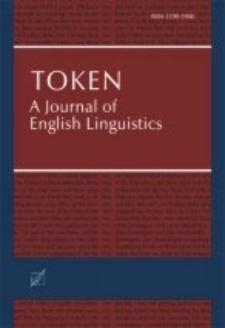Biblioteka Cyfrowa Uniwersytetu Jana Kochanowskiego udostępnia 13 273 obiektów cyfrowych
Obiekt
Tytuł: The merger of OE pyncan and pencan
Twórca:
Tytuł publikacji grupowej:
Abstrakt:
The development of Modern English think is often explained by the morphological merger of the two verbs þencan ‘to think’ and þyncan ‘to seem’ in early Middle English. This paper exemplifies that it is not the confusion between personal construction of þencan and ‘impersonal’ constructions of þyncan but the loss of contrast between < -e- > and < -i- > in the Northern dialect and other dialects, which leads to the merger of the two verbs that occurred with the present forms þence and þince, as well as the merger between < -u- > and < -ou- > in the preterite forms þohte and þuhte.
Miejsce wydania:
Opis fizyczny:
ISSN:
Wydawca:
Wydawnictwo Uniwersytetu Jana Kochanowskiego w Kielcach
Data wydania:
Identyfikator:
oai:bibliotekacyfrowa.ujk.edu.pl:8019 doi:10.25951/4895
Język:
Jest częścią:
Token : A Journal of English Linguistics
Ma część:
Typ:
Prawa dostępu:
Format:
Kolekcje, do których przypisany jest obiekt:
- Biblioteka Cyfrowa Uniwersytetu Jana Kochanowskiego > Wydawnictwo Uniwersyteckie
- Biblioteka Cyfrowa Uniwersytetu Jana Kochanowskiego > Wydawnictwo Uniwersyteckie > Wydawnictwa ciągłe
- Biblioteka Cyfrowa Uniwersytetu Jana Kochanowskiego > Wydawnictwo Uniwersyteckie > Wydawnictwa ciągłe > "Token : A Journal of English Linguistics"
Data ostatniej modyfikacji:
4 kwi 2025
Data dodania obiektu:
13 lut 2023
Liczba wyświetleń treści obiektu:
66
Wszystkie dostępne wersje tego obiektu:
https://bibliotekacyfrowa.ujk.edu.pl/publication/4895
Wyświetl opis w formacie RDF:
Wyświetl opis w formacie OAI-PMH:
| Nazwa wydania | Data |
|---|---|
| Ogura, Michiko, The merger of OE pyncan and pencan | 4 kwi 2025 |

